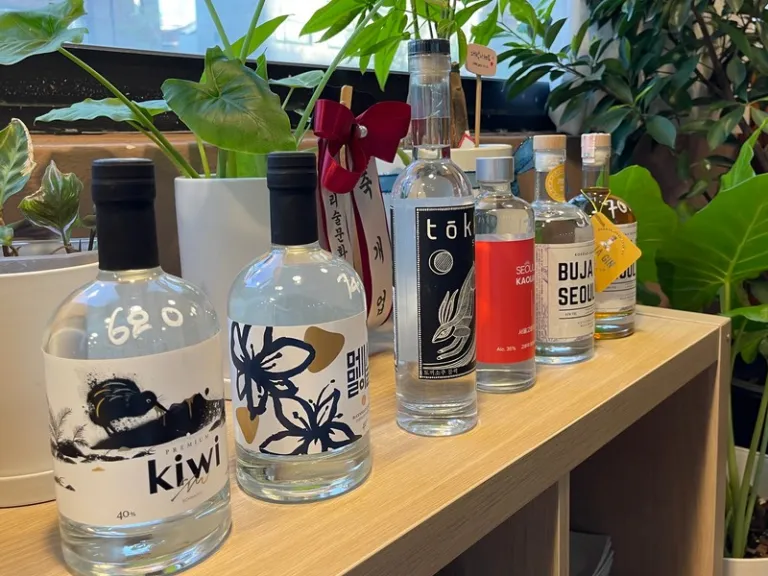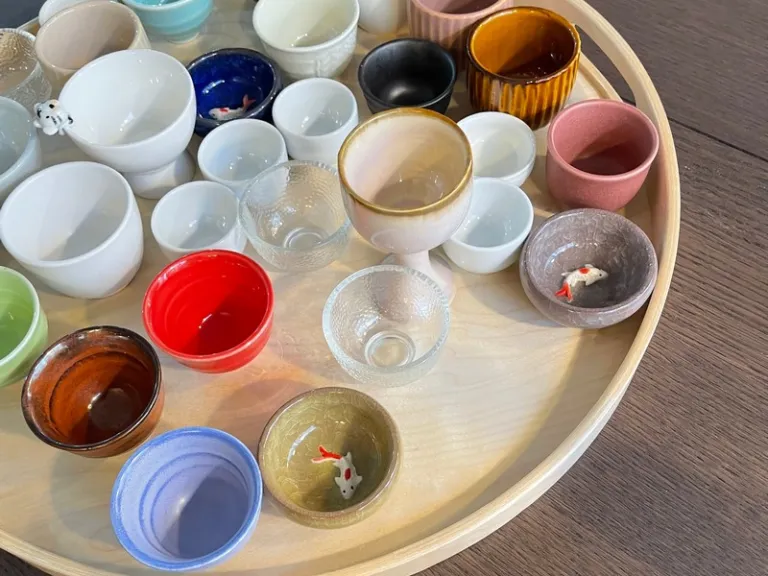Soju alcohol content varies depending on the brand and type. Traditionally, soju was around 40% ABV. You can still get this soju from craft and premium soju suppliers. You will only find these bottles in better Korean pubs, supermarkets, and specialty stores so look closely and carefully if you want it.

Trends in the soju market
We’re seeing a divergence in soju alcohol percentage these days. Lower percentage mass produced sojus are coming out to attract young female customers. High end and craft sojus are appearing to connoisseurs, between 25 and 40% or more. In America, lower alcohol sojus are more popular because liquor laws put them outside the hard liquor category. This makes them easier to stock them.
The more common mass produced green bottles tend to be around 19-25% ABV. This includes Chamisul, Jinro, and Chum Churum. Over the decades, mass produced soju has gone down in ABV. In the 1960s, it was in the 30s. It had gone down to 25% in the 1990s. In the mid-2000s, new “softer” products came out to try to attract more female customers. Yes, I know that’s sexist, but that was their intent.

In 2015, fruit flavored soju came out, which brought the alcohol content down to 16%. These are much smoother to drink and are good introductory sojus for people that just want to dip their toe… or tongue in for a taste. The low alcohol content soju with the fruit flavors make them so easy to drink, some people just stick a straw in them and drink them like juice. We are not recommending this method, but it has been done.
A rule of thumb for the alcohol content of soju.
- Green bottle – Around 22%
- Green bottle with fruit – Around 16%
- Not a green bottle – 25-40%
The alcohol content is always somewhere on the bottle if you’re unsure. Pick up those spectacles and look closely to find it. Some brands include the alcohol content in the name like Jinro 24 or Hwayo 17, for example. That makes it really easy to tell, doesn’t it?
Soju Alcohol Content by Brand
- C1 Blue Soju – 18-19.8%
- C1 Grapefruit – 14%
- Chaejeul Surok Fruit – 14%
- Cham – 18%
- Chamisul 16.9 – 16.9%
- Chamisul Original – 20%
- Chamisul Fresh – 17.2%
- Chamisul Fruit Soju – 13%
- Chamnamultong Malgeunseul – 16%
- Cho-eun Day (Good Day) Fruit Color Series – 13.5%
- Cho-eun Day (Good Day) Original – 16.9%
- Chum-Churum Mild – 16.8%
- Chum-Churum Original – 17.5%
- Chum-Churum Rich – 20%
- Chum-Churum Soonhari Fruit Soju – 12-14%
- Hallasan Olle – 21%
- Hallasan Original – 18.5%
- Hwayo 17 – 17%
- Hwayo 23 – 23%
- Hwayo 25 – 25%
- Hwayo 41 – 41%
- Ilpoom Andong Soju (brown bottle) – 40%
- Ilpoom Andong Soju (frosted bottle) – 21%
- Ipsaeju – 19%
- Ipsaeju Premium – 20.1%
- Jinro 20 – 20%
- Jinro 24 – 24%
- Jinro 25 – 25%
- Jinro Gold – 25%
- Jinro Ilpoom 18 Year – 31%
- Jinro Ilpoom 1924 – 25%
- Jinro Original – 20.1%
- MalgeulLinn – 20%
- O2Linn – 19.2%
- Pungjeong Sagye – 25% & 42%
- Saan Soju – 21%
- Shiweonhan Cheongpum – 18%
- Tokki Black – 40%
- Tokki White – 23%

